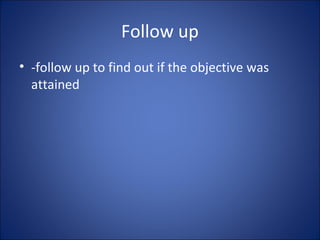Lesson 5 using and evaluating instructional materials
- 1. USING AND EVALUATING INSTRUCTIONAL MATERIALS How to select and use instructional material to achieved desired objectives?
- 2. Guide Questions in the Selection of Materials • Do materials give a TRUE picture of the ideas they present? To avoid misconceptions, it is always good to ask when the material was produced? • Do the materials contribute meaningful content to the topic under study? Does the material help you achieve the instructional objective?
- 3. • Is the material appropriate for the age, intelligence, and experience of the learners? • Is the physical condition of the material satisfactory? E.g. – is a photograph properly mounted? • Is there a teacher’s guide to provide a briefing for effective use? The chance that the instructional material will be used to the maximum and to the optimum is increased with a teacher’s guide.
- 4. • Can the material in question help to make students better thinkers and develop their critical faculties? With exposure to mass media, it is highly important that we maintain and strengthen our rational powers. • Is the material worth the time, expense, and effort involved? A field trip , for instance, requires much time, effort and money. It is more effective than any other less expensive and less demanding IM hat can take its place? Or is there a better substitute?
- 5. If the IM is properly selected, is it a guarantee that it will be effective? • NO…it is one thing to select a GOOD IM, it is another thing to USE it WELL.
- 6. PPPF------by H. Smith and T. Nagel •Prepare yourself •Prepare your students •Prepare the material •Follow up
- 7. Prepare yourself • know your lesson objective/s • know what you expect from the class after the session • know why you choose a particular IM • Have a plan on how you will proceed, what questions to ask, how you will evaluate learning, how you will tie loose ends before the bell rings (wrap up and summarize)
- 8. Prepare your students • set class expectations and learning goals • give guide questions (so that they can answer during the discussion) • motivate students • keep students interested and engaged
- 9. Present the material • Plan well (to avoid the ROG syndrome) – Rehearse if needed – Plan performance – Try the materials ahead
- 10. Follow up • -follow up to find out if the objective was attained










